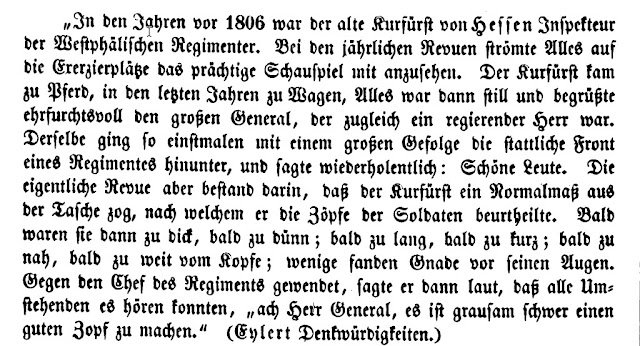Wednesday, November 11, 2020
Sunday, May 10, 2020
Saturday, April 18, 2020
Bilder des deutschen Wehrstandes: Baden und der schwäbische Kreis 1500 - 1800
Der alte Kurfürst von Hessen im Jahr 1806
Friday, April 17, 2020
Das königreich Westphalen; sieben jahre französischer fremdherrschaft im herzen Deutschlands, 1807-1813.
Geschichte der Insurrectionen wider das westphälische Gouvernement
Thursday, April 16, 2020
The Legion in Exile: The Kurhessian Troops Corps in Bohemia 1809
Wednesday, March 25, 2020
Dörnberg Against Bonaparte: Westphalia 1809
Friday, March 20, 2020
Bauern Gegen Bonaparte: Hessen-Kassel 1809
Tuesday, March 17, 2020
DRAGOONS AND HUSSARS
"Toelle and Henkel's 'Dragoner und Husaren in Grebenstein 1763-1870'" immerses readers in the enthralling world of elite Hessian cavalry, focusing on the Dragoon and Hussar Regiments. This meticulously researched book provides a detailed and informative account of these exceptional fighting units, chronicling their exploits from 1763 to 1870.
Set against the backdrop of Grebenstein, a quaint agricultural town in the northern reaches of the country, the narrative unfolds within the quarters that housed Hessian troops for many years. The book delves into the pivotal military reforms that swept through Hesse-Cassel, driven by Landgrave Friedrich II's admiration for Prussian military practices.
Readers passionate about historical military accounts will find themselves captivated by the in-depth and true-to-life records of these highly distinguished cavalrymen. 202 pages.






















e.jpg)






.jpg)
















